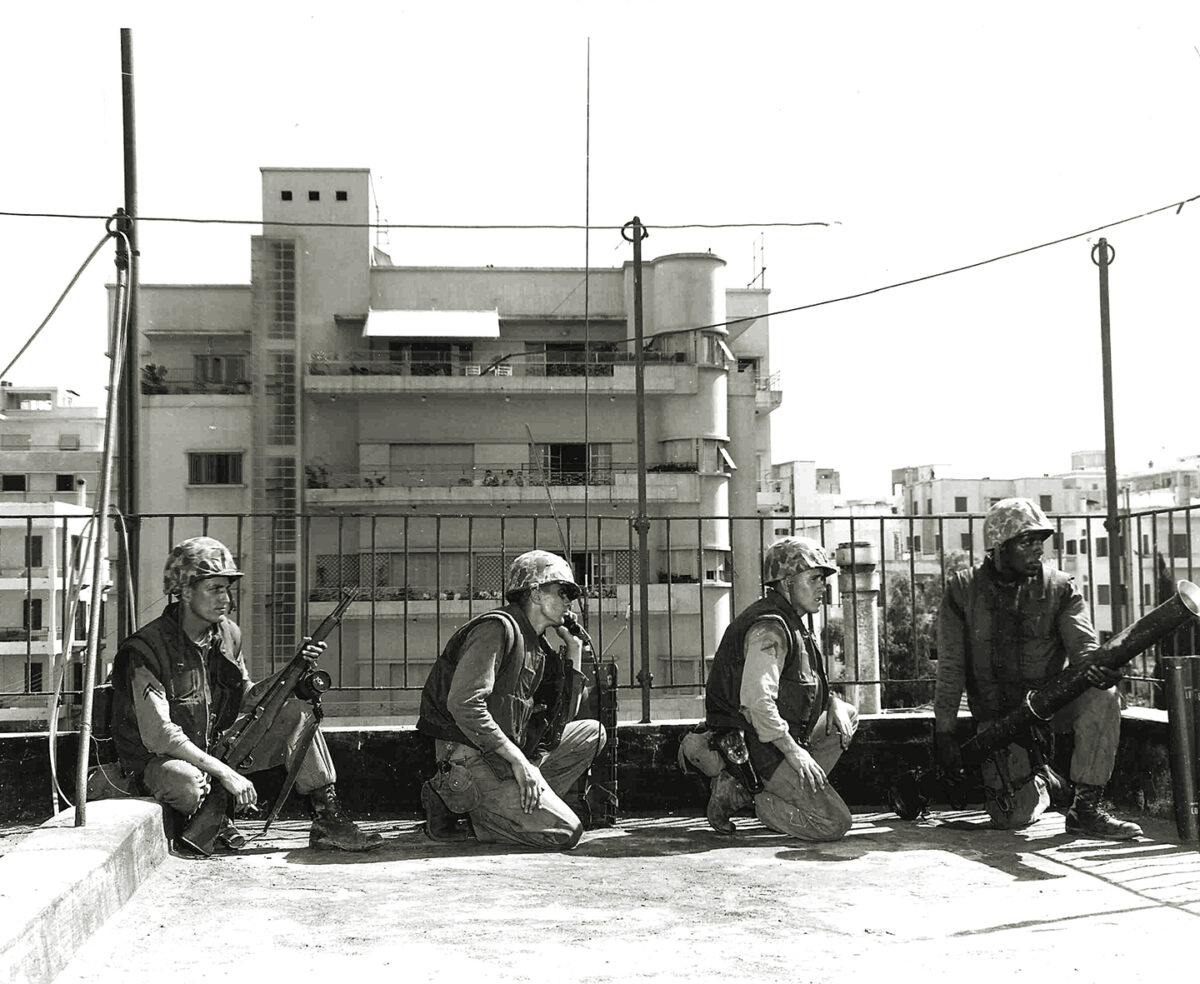Four U.S. Marines crouch on the rooftop of the U.S. embassy in Beirut on July 17, 1958, just two days after President Dwight D. Eisenhower authorized military intervention in that year’s Lebanon Crisis, a brewing civil war that threatened to rend the nation into a patchwork of political and religious factions. The deployment of more than 14,000 American personnel in Lebanon during Operation Blue Bat would be the first test of the U.S. military to police the Middle East in the name of containing communism, namely the Soviet Union’s growing influence in the region.
During the 1956 Suez Crisis, despite British and French intervention, the U.S. sought to remain a neutral party in the Arab-Israeli conflict. However, as Egyptian President Gamal Abdel Nasser and his League of Arab States received increasing amounts of aid and support from Russia, the Eisenhower administration began to fear another “domino effect” of nations falling to communism in the Middle East. In response, the Eisenhower Doctrine was formalized in 1957 to provide economic and military assistance to any Middle Eastern nation threatened by communist aggression. Lebanese President Camile Chamoun was the only one to invoke it.
In truth, when Chamoun asked for help, communism was the least of his problems. Lebanese Muslims were frustrated with Chamoun’s disdain for other Arab nations, and even Chamoun’s fellow Lebanese Christians were uncomfortable with his authoritarian crackdowns on protests. Syria and Israel both presented military threats on his borders, and riots were breaking out over what appeared to be fraud in his recent election. Fearing a coup against a U.S.-aligned leader, American troops stepped in, securing the airport, road and water routes around Beirut.
Despite continued protests, the U.S. troop presence apparently succeeded in preventing a civil war or coup. Negotiating with multiple factions, American diplomats then brokered a deal to allow Chamoun to peacefully finish his term in September, and moderate Christian General Fouad Chehab was chosen as a presidential compromise to cool tensions. While the intervention did in fact usher in a period of relative peace and prosperity, two years after Chehab’s 1973 death international interests and underlying tensions ultimately exploded into the Lebanese Civil War.
As a largely bloodless peacekeeping effort that preserved Lebanese independence and stymied Nasser, the ’58 Lebanon Crisis was certainly a victory for American foreign policy interests. That said, it started a pattern for continued high-level involvement and military interventions in the Middle East, not all of which were so successful.
historynet magazines
Our 9 best-selling history titles feature in-depth storytelling and iconic imagery to engage and inform on the people, the wars, and the events that shaped America and the world.


